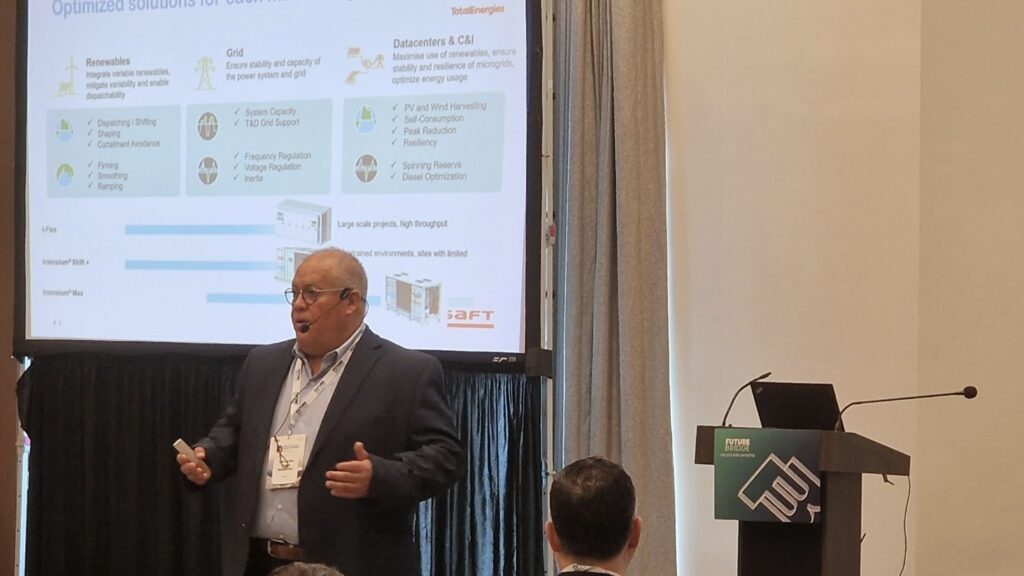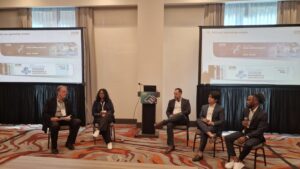The 3rd Future of U.S. Battery & Cleantech Giga Factories Summit recently provided a critical forum for business leaders to confront the unprecedented challenge of scaling up domestic battery & cleantech manufacturing. The conference focused heavily on the nexus of engineering, building, & operations excellence required to build resilient industrial ecosystems.
With the national energy transition underway, these plants form the basis for a sustainable future. So, it requires massive speed, precision, & capacity to embrace rapidly evolving solid-state technologies. The forces of international competition and tightened sustainability targets fueled intense discussions across the event. This article is a detailed report on the 3rd Future of U.S. Battery & Cleantech Giga Factories Summit, covering the highlights of the technical sessions and emphasizing the contributions of the lead industry partners.
Sessions at the 3rd Future of U.S. Battery & Cleantech Giga Factories Summit
The summit really stood out for how deep the conversations went. Instead of just talking theory, the sessions got into the real problems that come with big construction and production projects. Attendees walked away with clear takeaways and a full picture of the gigafactory journey, from site planning through long-term operations/ compliance. So, let’s take a look at them ahead:
From Training to Excellence: Advancing Workforce Skills and Safety in Gigafactory Operations: EHS as a Competitive Advantage
Speaker: Rene SOTOLONGO, Sr. Director of Global Environmental, Health, & Safety, Solid Power, Inc.
The speaker emphatically advanced that gigafactories are at the nexus of the unprecedented scale, velocity, and transparency, stating that EHS is not optional; it is a question of survival. Furthermore, the presenter identified three compounding stresses that are consistently impacting these complex, high-stakes operations:
- Increasing regulatory complexity,
- The persistent challenges of workforce quantity and high turnover,
- And the persistent manufacturing pressure to meet targets.
As a result, this talk highlighted that an ongoing integrated EHS strategy is key to avoiding risk. It also helps in achieving true competitive advantage in the marketplace.
Smart Battery Manufacturing: Integrating Automation & Construction for Optimized Production
Speaker: James Ellis, Senior Business Developer, Siemens
The speaker provided guidelines on achieving streamlined manufacturing with the strategic integration of technology. The speaker advised the application of an outcome-based approach for technology procurement and integration. It helps to:
- Achieve maximum project ROI,
- Ease development timelines,
- Effectively mitigate risks,
- And ensure the long-term system maintainability in battery manufacturing.
Moreover, the session looked at how IoT digitalization can bring consistency to interfaces and data models across facility automation and manufacturing equipment. So, standardization was shown as the key to building a production setup that runs smoothly and efficiently.
Jacksonville BESS Gigafactory: How a fully integrated delivery model creates value for BESS solutions.
Speaker: Gerardo Trejo Rebollar, America region General Manager of the ESS Division, SAFT
The presenter discussed the 106-year history of the company’s work in batteries and presented the road map to a flexible BESS solution. Additionally, the presenter presented the installation of the Gigafactory for BESS using the Jacksonville case as a reference. The presentation also outlined how system integration acts as the guideline for successful applications, gave examples from the project portfolio & benefits, and outlined the life cycle road map to keep a system running for 20 years.
Use of Discrete Event Simulation (DES) and Digital Twin in Factory Design
Speaker: Abhishek KSHIRSAGAR, Staff Simulation Engineer, Tesla
The presenter began with an overview of discrete event simulation use in Gigafactory design and the precise engineering of manufacturing system design. The session at the 3rd Future of U.S. Battery & Cleantech Giga Factories Summit revolved around the use of a digital twin, combining discrete event simulation with data integration, as a vital optimization tool for Gigafactory manufacturing processes to allow for virtual testing and real-time process optimization.
Early Cooling Designs for your GigaFactory will save Time, money, energy, and water
Speaker: Bill WILLIAMS, Global Director Business Development, Battery Manufacturing, Baltimore Aircoil Company
The presenter made a very sound business case, that upfront design optimizes CapEx as much as OpEx. Furthermore, the presenter underscored the need for effective and bespoke cooling designs for maximum effectiveness. Useful lessons learned for the cooling of gigafactories were also accentuated in the presentation. Additionally, since this infrastructure is a 25-year commitment, the presenter appealed to the project teams to carefully consider all the choices during the planning stage.
From Construction to Energy to Operations: Advancing Reliability and Smart Facility Management Across America’s Gigafactories
Speaker: Felix ADABLA, Facility Management – Electrical Specialist, Hyundai Motor Group Metaplant America (HMGMA)
The speaker pointed out how strategic design decisions made at the initial construction phase ultimately determine:
- Long-term uptime,
- Maintenance cost,
- And the factory’s overall resilience.
Furthermore, the presenter at the 3rd Future of U.S. Battery & Cleantech Giga Factories Summit discussed smart energy management in action. He put emphasis on a data-driven approach to get predictive insights for facility operations. The session also provided practical learnings from scaling renewables for resilience. It includes the use of utility-scale assets such as a solar carport. The speaker further proposed a resilience-driven framework that positions reliability as the foundation for future-proof, cost-competitive operations.
More Than Builders: Partnering for Gigafactory Success
Speaker: Brian HWANG, Director of Operations, Eastern Builders
The presenter made it clear that gigafactory projects need more than a standard client–contractor setup. They only work when owners, builders, and stakeholders treat it as a true partnership. The session also pointed out that staying disciplined, being transparent, and building trust are what make delivery at scale possible. The speaker also described how Army leadership and operational planning are brought into construction, imparting safety, responsibility, & mission-readiness to each project team. Additionally, the session entailed moving beyond the boundaries of merely contractual agreements towards building an organizational culture with quality, safety, and workforce development as foundation corners.
The Cornerstone of Modern Gigafactory Builds
Speaker: Patricia ROSARIO, Enterprise Technical Account Manager, Cupix
The presenter took participants through a working knowledge of what spatial intelligence entails. The session also went through how critical it is to possess this skill on gigafactory projects at every step. Furthermore, the session identified actual uses of how owners and contractors are presently taking advantage of spatial intelligence to:
- Create wiser bids,
- Track progress,
- And substantially reduce costs.
So, attendees left the session ready to try out spatial intelligence on their own gigafactory projects.
PANEL DISCUSSION – Designing Gigafactories for the Solid-State Era: Flexibility, Sustainability, and Scalability
Moderator: Bill WILLIAMS, Global Director Business Development, Battery Manufacturing, Baltimore Aircoil Company
Panelists: Brian HWANG, Director of Operations, Eastern Builders; Rene SOTOLONGO, Sr. Director of Global Environmental, Health, & Safety, Solid Power, Inc.; Felix ADABLA, Facility Management – Electrical Specialist, Hyundai Motor Group Metaplant America (HMGMA); Kavitha SIVAKUMAR, Factory Design Engineer, Tesla
This panel discussion at the 3rd Future of U.S. Battery & Cleantech Giga Factories Summit brought on leaders for deliberation on the priority roadmap for gigafactory design in such a way that it is future-proof. Moreover, the panel raised how adaptability, greenness, and scalability must be built into the design at the point of birth so that it is ready to support the future solid-state battery era. Further, the exchange brushed over the most urgent design requirements, the integration issues, and the proactive strategy required. This is so that facilities of today are made ready for the technology needs of tomorrow.
From Idea to Launch – How Strategic Material Flow Design Enables Scalable, Efficient Gigafactories.
Speaker: Kavitha SIVAKUMAR, Factory Design Engineer, Tesla
The speaker outlined a systematic factory design strategy, such as simultaneous design ideas. This is where various stages of engineering occur simultaneously. The session also went through the material flow design’s central role. Moreover, the speaker detailed how optimizing factory design from the outset is key to long-term success. The presentation concluded by focusing on how to achieve scalability & efficiency with a combined design. It harmonizes the physical facility layout and the processes of operation. This is so that they work in conjunction to realize maximum output and minimum loss right from the launch stage.
The Future-Proof Gigafactory: A Blueprint for Solid-State Battery Integration
Speaker: Hui DU, Chief Technology Officer, Ampcera Inc.
The presenter argued that future gigafactories must go beyond scaled-up lithium-ion lines. This prioritizes modularity and flexibility to accommodate shifting technology. Furthermore, the greatest design requirements that were cited were:
- Flexible layouts,
- Advanced material handling,
- And innovative dry rooms, actually required by the production processes for solid-state.
Moreover, the presenter emphasized that forward-looking planning prevents costly retrofits and shortens time-to-market. It also allows facilities to stay ahead of technological evolution. The session also gave a strategic master plan for future-proofing facilities into the solid-state battery era.
Global Compliance Strategies for Gigafactory Success
Speaker: Josh SHEPARD, Senior Business Development Manager – Field Evaluations, CSA Group
The presenter summarized global compliance requirements. The talk covered significant regulatory requirements of North American and other gigafactories concerning the inclusion of local safety standards as early as the design phase. Moreover, the presenter touched on common compliance pitfalls encountered in gigafactory projects. This is particularly in electrode production, cell assembly, formation/aging, and module/pack assembly. This could end up causing delays or even shutting things down for a while. The session also emphasized early regulatory interaction and precise risk assessment. It guarantees seamless commissioning and long-term operational success.
Advanced Batteries to Electrify Aviation
Speaker: Mohammad Asadi, Associate Professor, Illinois Tech
The speaker described advanced battery technology for the aviation sector. The presentation detailed Li–O₂ batteries with Li₂O formation and noted their ability to attain gasoline-level energy density via a four-electron reaction. Furthermore, the presenter explained how a composite polymer electrolyte enables Li₂O to be the major product at room temperature. The technology delivers 1000 cycles at 1000 mAh/g with minimal polarization and high-rate capability, achieving over 1 kWh/kg (1000 Wh/L). This level of high performance makes these batteries very promising when it comes to aeronautics and heavy transport.
Reversible Fuel Cells as a Distributed Energy Strategy for Gigafactories
Speaker: Meilin LIU, Hightower Chair and Regents’ Professor, Georgia Institute of Technology
The speaker at the 3rd Future of U.S. Battery & Cleantech Giga Factories Summit went into the concept of reversible fuel cells and how they can be used as a distributed energy solution for gigafactories. Moreover, the presentation provided an overview of the way such systems can increase the energy independence and technical robustness of a facility. The speaker also presented the pragmatic considerations and benefits of applying this technology to the power load management of large-scale manufacturing facilities or overall sustainability goals.

Who Were The Sponsors For the 3rd Future of U.S. Battery & Cleantech Giga Factories Summit?
The aggressive goals set by the United States’ cleantech and battery production industry can never be achieved without the support/ help of technology in the form of assistance/ expertise from major players in the sector. They provide niche, mission-critical solutions that ensure efficiency, safety, and extended life performance for the coming generation of big-scale production facilities. So, this section deals with the major sponsors for the event that made it insanely valuable:
Baltimore Aircoil Company (BAC) – Silver Sponsor
Baltimore Aircoil Company, or BAC, has been working on heat transfer technology since 1938. They make equipment that keeps big industrial plants, data centers, and factories running reliably. They also create eco-friendly, high-tech cooling systems, including their Nexus™ Modular Hybrid Cooler. It saves water and minimizes maintenance. Moreover, BAC works closely with international project engineers to develop effective cooling solutions and has more than a thousand patents to its name.
BAC added tremendous value to the 3rd Future of U.S. Battery & Cleantech Giga Factories Summit by delivering a session that highlighted the significance of pre-project cooling designs. The presenter drew lessons learned for cooling gigafactories, illustrating how effective, customized designs optimize CapEx as well as OpEx. This reinforced BAC’s long-term dedication to operational consistency.
Cupix – Bronze Sponsor
Cupix provides teams a chance to keep ahead of the massive time and budget blowouts that occur when plans and ground reality differ in gigafactory-sized projects. Since 2015, they have been employing standard 360-degree photos and videos to create complete 3D models of workspaces that anybody can walk through from a laptop or phone. Via their CupixWorks solution, managers can keep up with BIM plan progress, measure in the model, and make correct notes before problems get out of control.
Cupix was a huge value addition at the summit. They led a session that taught the audience that spatial intelligence is the key to building modern gigafactories. The presenter illustrated how owners and builders are using this critical technology to construct wiser bids, track progress, & reduce costs substantially.
Siemens – Bronze Sponsor
Siemens is a worldwide technology powerhouse with a strong impact on the way industries are changed by healthcare technology, smart infrastructure, and industrial automation. They are defined by a commitment to connecting digitalization and sustainability. Its Digital Industries business leads in automation and software with significant investments in digital twins and IoT.
Moreover, the Siemens Xcelerator platform combines hardware, software, and services, while the Smart Infrastructure business supports the next generation of resilient buildings. Siemens contributed technical value to the 3rd Future of U.S. Battery & Cleantech Giga Factories Summit through a smart battery production session. The presenter led delegates through strategic tech integration for maximum project ROI and leveraging IoT digitalization to standardize data models across equipment. It is a pivotal step to maximizing optimized production.
ATS Products Inc. – Exhibiting Partner
ATS Products Inc. has been manufacturing custom exhaust systems since 1971. They are specifically made to deal with corrosive vapors, remain leak-free, and muffle fire hazards within battery factory ducts. ATS was the first company to pass the demanding FM4922 cleanroom ducts fire test, establishing the world standard for protection.
Furthermore, their FXP™ duct line features a vinyl ester liner for chemical resistance and a phenolic outer finish for fire protection with patented joining technologies that make everything airtight. As an exhibition partner, ATS offered its advanced solutions, educating attendees on how to deliver world-class, uncompromising safety standards in high-tech facilities. This is where air quality and safety are not negotiable.
CSA Group – Presenting Partner
CSA Group has been assisting businesses for over 100 years, providing testing, inspection, & certification of various products. It includes modern sustainability technology. Moreover, the organization’s purpose is to enable customers to make sure that their products are safe, reliable, and work as expected. The organization also counsels businesses on technical and regulatory issues in simple, pragmatic terms.
Leaning on experience and accreditations, CSA Group customizes its services to improve clients’ quality and win trust. CSA Group added strategic value to the 3rd Future of U.S. Battery & Cleantech Giga Factories Summit by offering a session on global compliance strategy. Additionally, the presenter identified key regulatory requirements and described typical compliance mistakes to help participants avoid costly mistakes. So, there was a highlight on the importance of early regulatory involvement in achieving long-term business success.
To Sum Up
The 3rd Future of U.S. Battery & Cleantech Giga Factories Summit established a needed roadmap for U.S. manufacturing’s future, confirming that future success relies on a combination of advanced digital technologies, robust EHS culture, and flexible designs set to accept solid-state technology. Also, the discussions reconfirmed the significance of upfront design planning and proactive global compliance in making it effective while minimizing risk.
If you want to stay ahead of the competition and secure a resilient, profitable future in your sector, commit to attending essential industry sustainability events that we have coming up. Register now!


